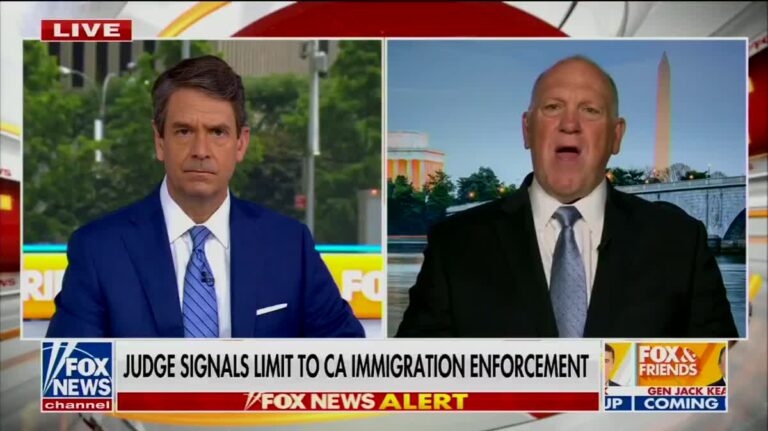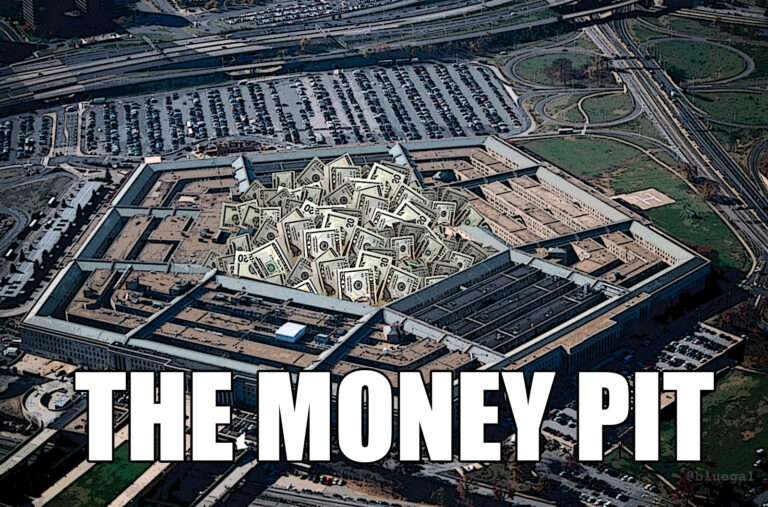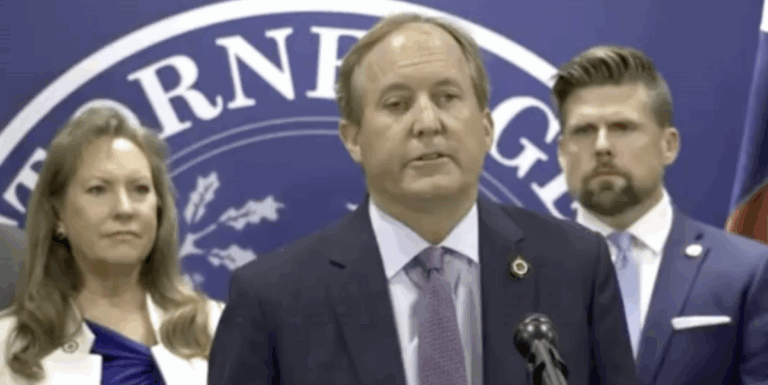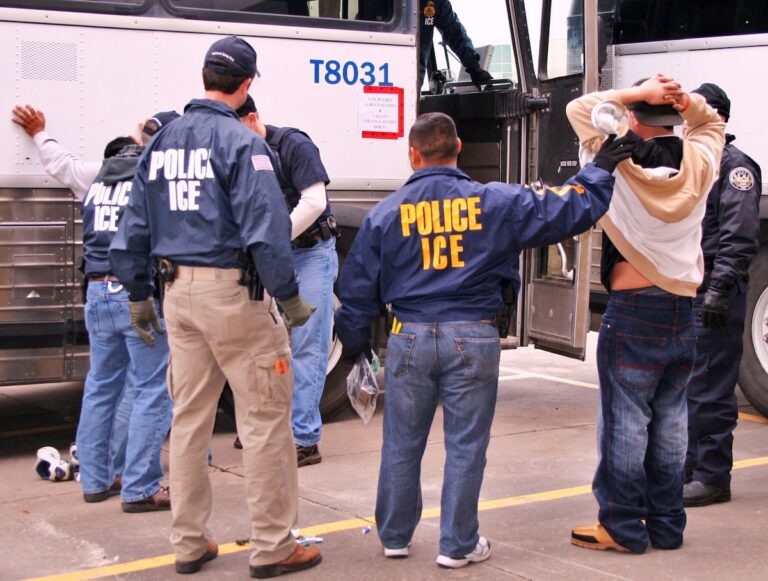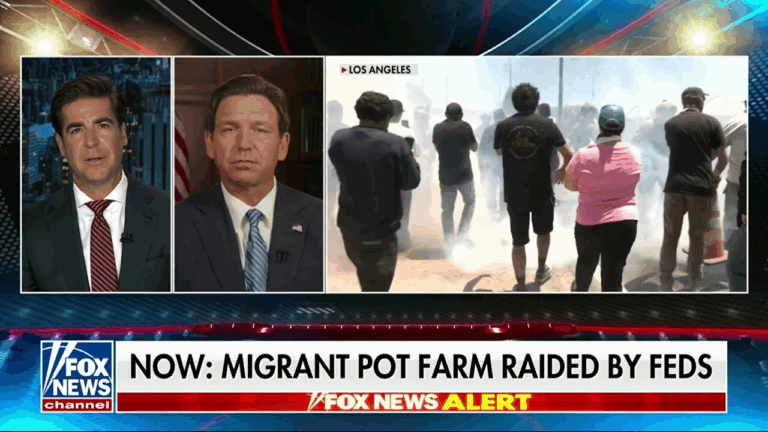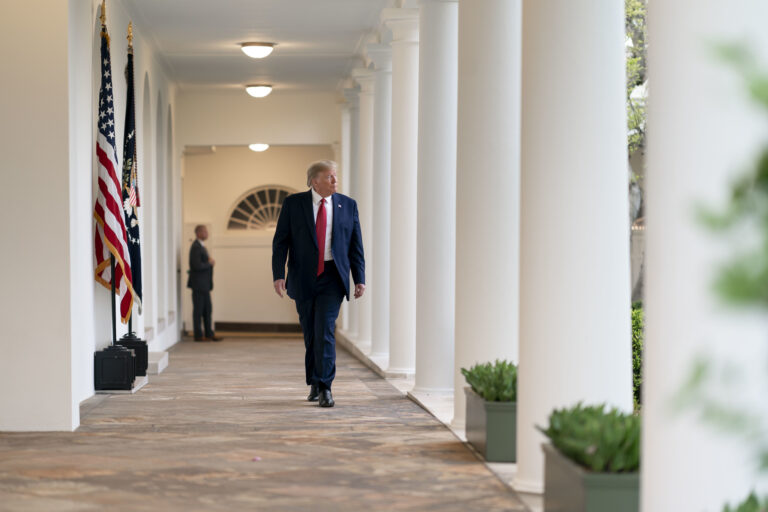Democrat News
2nd Circuit Upholds NY Right To Enforce Gun Industry Liability Law
This post was originally published on this site
A Second Circuit panel yesterday affirmed the enforceability of a New York law that imposes liability for gun industry members who knowingly or recklessly endanger the safety or health of the public in New York through their sale or marketing of firearms. Via Courthouse News:
Passed in 2021, the law set up a framework of accountability for the gun industry, setting a requirement for firearms companies that sell guns into New York to put safeguards in place to address straw purchasing, gun trafficking and theft.
A firearms arms industry group claimed on appeal that the law was preempted by federal protections for gunmakers, but the three-judge Second Circuit panel concluded “the law falls within [the 2005 Protection of Lawful Commerce in Arms Act]’s predicate exception clause and thus is not preempted.”
Gun control advocates celebrated the Second Circuit’s ruling as a “bellwether for other challenges to similar laws across the country.”
Eric Tirschwell, executive director of the legal arm of the Everytown for Gun Safety Support Fund, celebrated the ruling as an affirmation that “no one is above the law,” echoing a phrase often reprised by New York Attorney General Letitia James.
Missouri’s GOP Governor Just Slapped Down His Own Voters
This post was originally published on this site
Missouri’s Republican governor on Thursday signed legislation repealing the paid sick leave portion of a ballot measure that the state’s voters approved with nearly 60% support in the 2024 election.
The short-lived provision, which will officially be repealed on August 28, required Missouri employers to provide workers with an hour of paid sick time for every 30 hours of work. Businesses with 15 or more employees were required to provide up to 56 hours of earned paid sick time per year, and businesses with fewer than 15 employees were required to provide at least 40 hours of paid sick time.
The Missouri Budget Project estimated before its passage that the ballot measure’s paid sick leave benefits would reach 728,000 private-sector workers in the state.
The bill that Republican Gov. Mike Kehoe signed Thursday, known as H.B. 567, also restricts increases in the state’s minimum wage. The voter-approved initiative called for raising the state’s minimum wage to $15 an hour in 2026 and indexing it to inflation thereafter. H.B. 567 eliminates the inflation adjustment.
The Missouri Chamber of Commerce and Industry, a business lobbying group, characterized H.B. 567 as its top legislative priority. The bill was led by state Rep. Sherri Gallick (R-62) and state Sen. Mike Bernskoetter (R-6).
Kehoe’s Facebook post announcing his signature was deluged with comments from Missourians decrying the governor’s decision to overturn the will of the public.
“We the people collected signatures,” wrote one commenter. “We voted. And we passed Prop A into law. Remember you work for us. How dare you reverse the voice of your people?! The people you took an oath to serve.”
Missouri Jobs With Justice, which helped lead the campaign for the ballot measure, said in a statement that “with Governor Kehoe’s decision to sign H.B. 567 into law, workers will again face increased economic insecurity when balancing being sick with maintaining their job.”
The group noted that Kehoe’s support for repealing paid sick leave came after he “recently called a special session to approve spending millions of taxpayer dollars to subsidize billionaire-owned stadiums.” On Thursday, Kehoe also signed legislation slashing the state’s capital gains tax.
“Simply put, Missouri workers and their families do not deserve to see their newly earned paid sick leave stripped away,” said Missouri Jobs With Justice. “Not only is this a slap in the face to workers asking for an opportunity to earn paid sick leave, it’s an insult to over 57% of Missourians who voted for Proposition A in November.”
Throughout the process of pushing H.B. 567 through the Legislature, Missouri Republicans openly voiced contempt for voters who supported the paid sick leave and minimum wage initiative. One GOP lawmaker, state Rep. Mitch Boggs, said, “Of course the people voted for it.”
“It’d be like asking your teenager if he wanted a checkbook,” said Boggs.
Republished from Common Dreams under Creative Commons (CC BY-NC-ND 3.0).
Trump’s Border Czar: ICE Agents ‘Don’t Need To Follow The Rules’
This post was originally published on this site
Trump’s border czar, Tom Homan, responded on Fox News to a federal judge’s tentative ruling on Thursday that, the Los Angeles Times reports, “suggests she will order the Trump administration to halt unlawful stops and arrests that advocates say have terrorized Angelenos, forced some immigrants into hiding, and damaged the local economy.”
Homan, who will likely be featured in a future Nuremberg-type trial, doubled down to show off his disdain for the Constitution, specifically, the 14th Amendment, which prohibits detaining someone solely based on race, ethnicity, or appearance. Also, contrary to what that thumb-head says, probable cause is still a thing.
“Look, people need to understand ice officers and board, so they don’t need to follow the rules,” Homan insisted. “You know, get our typical articulable facts based on the location, the occupation, their physical appearance, their actions, like a uniform board place walks up to him at, for instance, a Home Depot, and they got all these articulable facts.”
“Plus, the person walks away or runs away,” he continued. “It’s not probable cause, it’s reasonable suspicion.”
Reasonable suspicion, however, allows law enforcement officers to briefly detain and question an individual if they have a specific and articulable reason to believe that the individual is, has been, or is about to be involved in criminal activity, so his argument is dumb as shit.
“These officers really good what they do,” he said of the secret police, which has detained and, in some cases, deported American citizens. And he’s also saying that kidnapping is OK if his victims aren’t white.
Lord, help me to not punch a motherfucker today, please, and thank you.
Defense Spending Is A Privateering Grift, Part Infinity
This post was originally published on this site
Less than a week after U.S. President Donald Trump signed a budget package that pushes annual military spending past $1 trillion, researchers on Tuesday published a report detailing how much major Pentagon contractors have raked in since 2020.
Sharing The Guardian‘s exclusive coverage of the paper on social media, U.K.-based climate scientist Bill McGuire wrote: “Are you a U.S. taxpayer? I am sure you will be delighted to know where $2.4 TRILLION of your money has gone.”
The report from the Costs of War Project at Brown University’s Watson School of International and Public Affairs and the Quincy Institute for Responsible Statecraft shows that from 2020-24 private firms received $2.4 trillion in Department of Defense contracts, or roughly 54% of DOD’s $4.4 trillion in discretionary spending for that five-year period.
The publication highlights that “during those five years, $771 billion in Pentagon contracts went to just five firms: Lockheed Martin ($313 billion), RTX (formerly Raytheon, $145 billion), Boeing ($115 billion), General Dynamics ($116 billion), and Northrop Grumman ($81 billion).”
In a statement about the findings, Stephanie Savell, director of the Costs of War Project, said that “these figures represent a continuing and massive transfer of wealth from taxpayers to fund war and weapons manufacturing.”
“This is not an arsenal of democracy—it’s an arsenal of profiteering,” Savell added. “We should keep the enormous and growing power of the arms industry in mind as we assess the rise of authoritarianism in the U.S. and globally.”
The paper points out that “by comparison, the total diplomacy, development, and humanitarian aid budget, excluding military aid, was $356 billion. In other words, the U.S. government invested over twice as much money in five weapons companies as in diplomacy and international assistance.”
“Record arms transfers have further boosted the bottom lines of weapons firms,” the document details. “These companies have benefited from tens of billions of dollars in military aid to Israel and Ukraine, paid for by U.S. taxpayers. U.S. military aid to Israel was over $18 billion in just the first year following October 2023; military aid to Ukraine totals $65 billion since the Russian invasion in 2022 through 2025.”
“Additionally, a surge in foreign-funded arms sales to European allies, paid for by the recipient nations—over $170 billion in 2023 and 2024 alone—have provided additional revenue to arms contractors over and above the funds they receive directly from the Pentagon,” the paper adds.
The 23-page report stresses that “annual U.S. military spending has grown significantly this century,” as presidents from both major parties have waged a so-called Global War on Terror and the DOD has continuously failed to pass an audit.
Specifically, according to the paper, “the Pentagon’s discretionary budget—the annual funding approved by Congress and the large majority of its overall budget—rose from $507 billion in 2000 to $843 billion in 2025 (in constant 2025 dollars), a 66% increase. Including military spending outside the Pentagon—primarily nuclear weapons programs at the Department of Energy, counterterrorism operations at the Federal Bureau of Investigation (FBI), and other military activities officially classified under ‘Budget Function 050’— total military spending grew from $531 billion in 2000 to $899 billion in 2025, a 69% increase.”
Republicans’ One Big Beautiful Bill Act passed earlier this month “adds $156 billion to this year’s total, pushing the 2025 military budget to $1.06 trillion,” the document notes. “After taking into account this supplemental funding, the U.S. military budget has nearly doubled this century, increasing 99% since 2000.”
Noting that “taxpayers are expected to fund a $1 trillion Pentagon budget,” Security Policy Reform Institute co-founder Stephen Semler said the paper, which he co-authored, “illustrates what they’ll be paying for: a historic redistribution of wealth from the public to private industry.”
Semler produced the report with William Hartung, senior research fellow at the Quincy Institute. Hartung said that “high Pentagon budgets are often justified because the funds are ‘for the troops.'”
“But as this paper shows, the majority of the department’s budget goes to corporations, money that has as much to do with special interest lobbying as it does with any rational defense planning,” he continued. “Much of this funding has been wasted on dysfunctional or overpriced weapons systems and extravagant compensation packages.”
In addition to spotlighting how U.S. military budgets funnel billions of dollars to contractors each year, the report shines a light on the various ways the industry influences politics.
“The ongoing influence of the arms industry over Congress operates through tens of millions in campaign contributions and the employment of 950 lobbyists, as of 2024,” the publication explains. “Military contractors also shape military policy and lobby to increase military spending by funding think tanks and serving on government commissions.”
“Senior officials in government often go easy on major weapons companies so as not to ruin their chances of getting lucrative positions with them upon leaving government service,” the report notes. “For its part, the emerging military tech sector has opened a new version of the revolving door—the movement of ex-military officers and senior Pentagon officials, not to arms companies per se, but to the venture capital firms that invest in Silicon Valley arms industry startups.”
The paper concludes by arguing that “the U.S. needs stronger congressional and public scrutiny of both current and emerging weapons contractors to avoid wasteful spending and reckless decision-making on issues of war and peace. Profits should not drive policy.”
“In particular,” it adds, “the role of Silicon Valley startups and the venture capital firms that support them needs to be better understood and debated as the U.S. crafts a new foreign policy strategy that avoids unnecessary wars and prioritizes cooperation over confrontation.”
Republished from Common Dreams under Creative Commons (CC BY-NC-ND 3.0).
Contributor: Maybe the Epstein case isn’t closed, but it’s not going to be political dynamite
This post was originally published on this site
A lot of people online have been very, very upset over the Trump Department of Justice’s twofold conclusion, announced last Sunday, that Jeffrey Epstein’s death in jail in 2019 was a suicide and that the Federal Bureau of Investigation had no “incriminating ‘client list’ ” among its Epstein files.
The tremendous uproar against the Justice Department and FBI has crossed partisan lines; if anything, it has been many conservative commentators and some Republican elected officials who have expressed the most outrage, with accusations and implications that the government is hiding something about the case to protect powerful individuals.
Given the sordid nature of the underlying subject matter and the fact the feds closely examined “over ten thousand downloaded videos and images of illegal child sex abuse material and other pornography,” the obsession with the “Epstein files” gives off a vibe that is, frankly, somewhat creepy. To be sure, it is always righteous to seek justice for victims, but many don’t want public scrutiny.
The Trump administration’s handling of the Epstein files has not been its finest hour. During a February interview on Fox News, Atty. Gen. Pam Bondi said, in response to host John Roberts’ question about whether the Justice Department would release a “list of Jeffrey Epstein’s clients,” that the list was “sitting on [her] desk right now to review.” It is an astonishing about-face for Bondi to now disavow that investigators have any such list. The Trump administration owes us all a clear explanation.
With that large caveat aside, though, the fact remains: This is just not the biggest deal in the world — and if you think it is, then you probably need to log off social media.
The midterm elections next fall are not going to be determined by the existence — or absence — of a “client list” for an extravagantly wealthy dead pedophile. Nor will they be decided on the absurd grounds of whether FBI Director Kash Patel and Deputy Director Dan Bongino have somehow been “compromised.” (They haven’t.) Instead, the election — and our politics — will be contested on typical substantive grounds: the economy, inflation, immigration, crime, global stability and so forth. This is as it should be. There are simply better uses of your time than fuming over the government’s avowed nonexistence of the much-ballyhooed client list.
You might, for instance, consider spending more time, during these midsummer weeks, with your family. Maybe you can take the kids camping or fishing. Maybe you can take them to an amusement park or to one of America’s many national park treasures. You can spend less time scrolling Instagram and TikTok and more time reading a good old-fashioned book; you will learn more, you will be happier and you will be considerably less likely to traffic in fringe issues and bizarre rhetoric that alienates far more than it unifies.
Instead of finding meaning in the confirmation biases and groupthink validations of social media algorithms, perhaps you can locate meaning where countless human beings have found it since time immemorial: religion. Spend more time praying, reading scripture and attending services at your preferred house of worship. All of these uses of your time will fill you with a sense of stability, meaning and purpose that you will never find deep in the bowels of an X thread on the Epstein files.
Too many people today who are deeply engaged in America’s combustible political process have forgotten that there are more important things in life than politics. And even within the specific realm of politics, there are plenty of things that are more deserving of attention and emotional investment than others. Above all, it is conservatives — those oriented toward sobriety and humility, not utopianism and decadence — who ought to be able to properly contextualize America’s political tug-of-war within our broader lives and who ought to then be able to focus on the meaningful political issues to the exclusion of tawdry soap opera drama.
Like many others, I expect that the Justice Department’s recent — and seemingly definitive — waving away of the Epstein files saga will not actually prove to be the final word on the matter. To the limited extent that I allow myself to think about this sideshow, I hope that the administration does squarely address the many legitimate and unanswered questions now being asked by a frustrated citizenry that has seemingly been misled by the Trump administration, either in Bondi’s February statement or in this month’s report. But I also hope that the extent of this past week’s rage might serve as an edifying moment. Let’s return to the real things in life and focus on what matters most.
Josh Hammer’s latest book is “Israel and Civilization: The Fate of the Jewish Nation and the Destiny of the West.” This article was produced in collaboration with Creators Syndicate. @josh_hammer
More to Read
Insights
L.A. Times Insights delivers AI-generated analysis on Voices content to offer all points of view. Insights does not appear on any news articles.
Viewpoint
Perspectives
The following AI-generated content is powered by Perplexity. The Los Angeles Times editorial staff does not create or edit the content.
Ideas expressed in the piece
- The article asserts that the Trump Department of Justice’s conclusion about Jeffrey Epstein’s death being a suicide and the absence of a “client list” is not as politically explosive as online discourse suggests, urging readers to prioritize substantive issues like the economy, immigration, and crime in upcoming elections.
- It criticizes the administration’s handling of the Epstein files, noting Attorney General Pam Bondi’s earlier claim of possessing a client list as an “astonishing about-face” that demands public clarification.
- The author dismisses the fixation on Epstein-related conspiracies as “creepy” and counterproductive, advising readers to invest time in family, outdoor activities, and religious practices instead of social media outrage.
- While acknowledging legitimate public frustration, the piece emphasizes that midterm elections will hinge on traditional policy matters, not Epstein’s “sideshow,” and calls for conservatives to maintain focus on “sobriety and humility” in political engagement.
Different views on the topic
- Critics argue the Justice Department’s reversal on Epstein evidence fuels distrust, with bipartisan outrage questioning whether powerful figures are being shielded from accountability, as highlighted in the article’s own reporting[2].
- Conspiracy theories—previously amplified by now-FBI officials Kash Patel and Dan Bongino—insist Epstein was murdered to conceal a “client list” implicating elites, despite official findings of suicide and no evidence of blackmail[2][3].
- Skeptics demand transparency, citing Bondi’s February 2025 Fox News interview where she claimed a client list was “on her desk,” contrasting sharply with the DOJ’s July memo stating no such list exists[1][4].
- The DOJ’s refusal to release additional Epstein files—citing child abuse material and protection of innocent individuals—further fuels allegations of a cover-up, particularly among conservative circles[2][4].
WI & MN Republicans Send Letter Blaming Canada For Forest Fires
This post was originally published on this site
This sounds like something out of The Onion, but Republican House representatives Tom Tiffany and Glenn Grothman of Wisconsin and Brad Finstad, Michelle Fischbach, Pete Stauber and Tom Emmer of Minnesota all signed their names to it. “A handful of Republican dumbasses from the good old US of A are blaming Canada for wildfire smoke entering their country,” begins the video above.
Source: CBC
Canadian wildfire smoke is travelling south and making it difficult for some Americans to enjoy their summer, according to a letter from six members of Congress to Canada’s U.S. ambassador.
We write to you today on behalf of our constituents who have had to deal with suffocating Canadian wildfire smoke filling the air to begin the summer, begins the letter, published Monday and addressed to Ambassador Kirsten Hillman.
It was signed by Republican House representatives Tom Tiffany and Glenn Grothman of Wisconsin and Brad Finstad, Michelle Fischbach, Pete Stauber and Tom Emmer of Minnesota.
In our neck of the woods, summer months are the best time of the year to spend time outdoors recreating, enjoying time with family, and creating new memories, but this wildfire smoke makes it difficult to do all those things, says the letter, which can be read in full here (new window).
The representatives ask how the federal government plans to mitigate the wildfire smoke, attributing a lack of active forest management as a major driver of Canadian wildfires, and suggesting that some of the fires began with arson.
This one, from Wisconsin, put the letter in a Twitter post.
Ken Paxton’s Wife Files For Divorce
This post was originally published on this site
Angela Paxton, a Texas state senator, said in her divorce petition that her decision was made “on biblical grounds” and “in light of recent discoveries.” At least one of those “recent discoveries” was that hubby Ken Paxton, Texas’ attorney general, has been cheating on her.
But Ken Paxton’s infidelity and overall scuzziness is nothing new. Don’t tell me his wife had no idea.
Via The New York Times:
The couple, both Republicans who frequently refer to their Christian faith, have been married for 38 years, she said. During that time, Ms. Paxton stood by her husband as he faced criminal investigations into securities fraud, a federal investigation into corruption and abuse of office, and in 2023, a two-week public impeachment trial at the State Senate. She was present but not able to vote because of her conflict of interest.
A key part of the impeachment trial was the question of whether Mr. Paxton had used his office to do favors for an Austin real estate investor who had helped the attorney general conceal an extramarital affair.
At one point, toward the end of the trial, the woman at the center of the affair allegations came to the State Capitol, but she was ultimately not called to testify. She sat in a legislative library and later left the building.
Mr. Paxton was acquitted in the trial, and no federal charges were brought against him. He settled his state securities fraud by agreeing to pay restitution, take legal ethics classes and perform community service, but admitted no wrongdoing.
What finally woke up Sen. Paxton to the fact that her husband is so slimey? When just looking at him gives a good clue to anyone not totally blind? A better question might be why is she just now filing for divorce when, according to her legal papers and The Times, she and the attorney general have not lived together “as spouses” since June 2024?
Well, it could be the senator has found a new flame. But the timing of her divorce petition, right in the middle of Ken Paxton’s primary challenge to Sen. John Cornyn seems significant. According to The Times, Senate Republican leaders were not happy about this primary fight, which they thought could help Democrats. The National Republican Senatorial Committee wasted no time shredding Ken Paxton after his wife’s divorce announcement, The Times noted:
“What Ken Paxton has put his family through is truly repulsive and disgusting,” Joanna Rodriguez, a spokeswoman for the National Republican Senatorial Committee, said in a statement. “No one should have to endure what Angela Paxton has.”
Get the popcorn going!
Breaking: State Sen. Angela Paxton announced Thursday she has filed for divorce from her husband, Texas Attorney General Ken Paxton. https://t.co/jFZYjLePy6
— Texas Tribune (@TexasTribune) July 10, 2025
ICE Agents’ Morale Reportedly ‘In The Crapper’
This post was originally published on this site
The Trump administration claims morale has never been higher at ICE but in reality, its “physical infrastructure is crumbling,” according to a new report from Nick Miroff, in The Atlantic.
You can hardly blame the officers and agents for being disgruntled. What’s worse is that Stephen Miller’s ethnic cleansing demands are harming our national safety.
Via The Atlantic:
Having insisted for years that capturing criminals is its priority, ICE is now shelving major criminal investigations to prioritize civil immigration arrests, grabbing asylum seekers at their courthouse hearings, handcuffing mothers as their U.S.-citizen children cry, chasing day laborers through Home Depot parking lots. As angry onlookers attempt to shame ICE officers with obscenities, and activists try to dox them, officers are retreating further behind masks and tactical gear.
…
“Morale is in the crapper,” another former investigative agent told me.
A common theme of my conversations was dissatisfaction with the White House’s focus on achieving 1 million deportations annually, a goal that many ICE employees view as logistically unrealistic and physically exhausting. The agency has never done more than a quarter of that number in a single year. But ICE’s top officials are so scared of being fired—the White House has staged two purges already—that they don’t push back, another official told me.
Miller has made clear that not hitting that goal is not an option. He and DHS Secretary Kristi Noem called ICE’s top leaders to Washington in May and berated them in a tense meeting. Miller set a daily arrest quota of 3,000, a fourfold increase over the average during Trump’s first few months. Veteran officials murmured and shifted in their seats, but Miller steamrolled anyone who spoke up.
The Trump/Republican Beautiful For Billionaires Bill just gave ICE more money than the FBI; the Drug Enforcement Administration; the Bureau of Alcohol, Tobacco, Firearms and Explosives; the U.S. Marshals Service; and the Bureau of Prisons combined, The New Republic reported.
Still, no matter how big and powerful, an agency relies on a staff motivated to do the work. Let’s hope there are not enough Americans willing to get on board with the fascist behemoth Trump and Miller are planning
Fox’s Watters Wants ICE Agents To ‘Knock Some Heads Together’
This post was originally published on this site
Here we go again. It’s BLM-redux with the way Fox wants protesters treated.
This Thursday, more of Trump’s ICE thugs raided a cannabis farm in Ventura County California, where there was tear gas deployed against protesters, and three people were taken to the hospital.
Apparently that wasn’t enough for Fox host Jesse Watters, who opined that the ICE agents were being “too nice” during an interview with FL Gov. Ron DeSantis.
WATTERS: Well, we’re looking at some live pictures. There’s a standoff in Ventura County. You see some aerial shots by the chopper.
There seems to be some sort of raid that went down at a cannabis farm. It was staffed almost entirely by illegal alien labor, and all of a sudden Antifa, local agitators came in and it looks like they’ve kind of surrounded federal agents. They had to fly a chopper in to resupply the guys down there.
It seems to me like there’s a lot more intensity now with each one of these raids. How do you see this going forward?
DESANTIS: Well, if the kind of the roles were reversed, the left would be saying it’s an insurrection, right?
I mean, like you have federal law enforcement that have clear authority to enforce clear federal law, and if you are illegally employed in this country, you know that is a violation of federal law.
And so when you have folks, particularly in California who are trying to interpose themselves in between the lawful process that this country has, you know, that’s a big, big problem, and there’s certain parts of the country like Florida you would never be able to get away with that for two seconds.
But I think what’s happened in California, they’ve really developed a sense of entitlement to simply disregard federal laws they don’t like, particularly with regard to immigration, and this has been happening for many, many years.
And so I think the situation has escalated. I think that clearly they’re in the wrong, but this is likely not going to stop in California anytime soon, because I think this has just been embedded in the psyche there that somehow they can disregard laws they don’t want to follow.
WATTERS: Governor, is ICE being too nice? You see some video. I mean, they’re doing like I guess deescalation tactics, which probably is the right move, but the more you tangle with these crazy people, the more it gives them confidence.
And if you don’t make arrests and knock some heads together and show them that you may get hurt when you come in and block law enforcement, they’re just going to get more and more angry.
Do you think that they could step up some of their tactics?
DeSantis didn’t directly respond to Watters, and instead went after California for not cooperating with ICE on these raids before Watters wrapped things up by making another joke about alligators eating migrants, because we all know people that Fox hosts believe are subhuman being ripped to shreds by alligators is just hilarious.
DESANTIS: Well, I think what would happen if that were tried in Florida, you know, we would have our state agencies, and I’m sure a lot of the local police and sheriffs would be working and so ICE has the mission of apprehending the illegals.
If we had people that were trying to block a street, we in the state of Florida, we would take care of that, no problem, and work very cooperatively.
I think the problem is when you’re in a place like California, ICE doesn’t get the support that they need from the locals.
I think there’s a lot of, I think there’s a lot of police officers individually who want to be helpful, but the political leadership is not allowing that to happen.
So I wouldn’t necessarily say, you know, that it’s ICE has to take care of all of that because some of that absolutely needs to be done with state and local assets.
No, you’re 100 percent right. It’s actually more dangerous when the locals in California don’t provide backup because then the ICE agents are outnumbered and it gets a little hairy.
WATTERS: All right, Governor DeSantis, hopefully there’s no visitors from some of these people over the weekend with these gators. Chomp chomp.
These people are all cruel, racist monsters helping Trump to dehumanize huge swaths of our population, and they’re stupid to boot. The economic damage hasn’t manifested itself from this cruelty, but it’s coming, and soon.
‘Nice Self Own, Clowns’: White House Posts Cringiest Tweet Ever
This post was originally published on this site
The White House under Donald J. Trump unleashes some weird tweets, and this newest one is no different, as it posted an AI image portraying the president as a buff tights-wearing Superman, with the words, “A Trump Presidency” and “Truth Justice And The American Way” included in the cringe post.
I can’t believe this is an official tweet from the White House. Also, ICE would deport Superman for being an “illegal alien.” But the current White House Twitter account is good at self-owns.
Critics weighed in with a reality check.
I can’t believe this is an official tweet from the White House. Also, ICE would deport Superman for being an “illegal alien.” But the current White House Twitter account is good at self-owns.
Good try, White House. We haven’t forgotten about the Epstein files, though. But thanks, once again, for turning this country into a laughingstock, as if other people around the world and in Sane America, can’t see that Trump, a former beauty pageant barker, is an obese 79-year-old man who is so fucking confused that instead of showing up to work each day, he ends up at a golf course with a cart carrying his bloated carcass around.
Not to mention how utterly woke the original Superman was.



